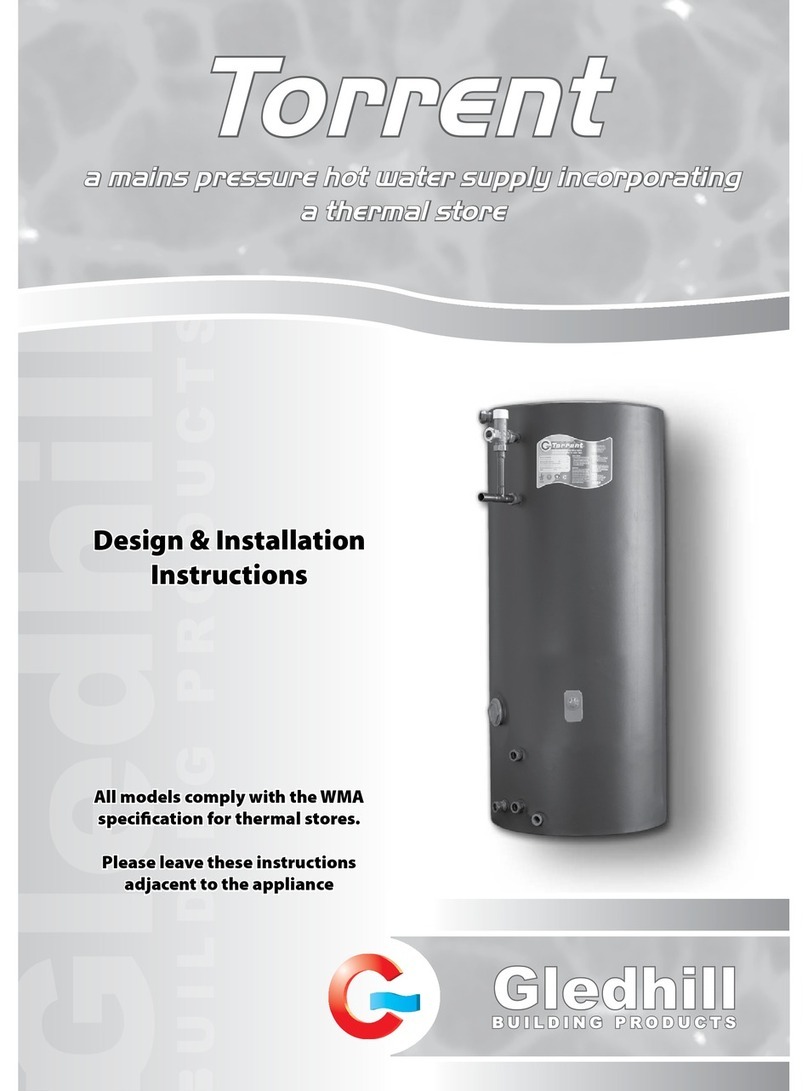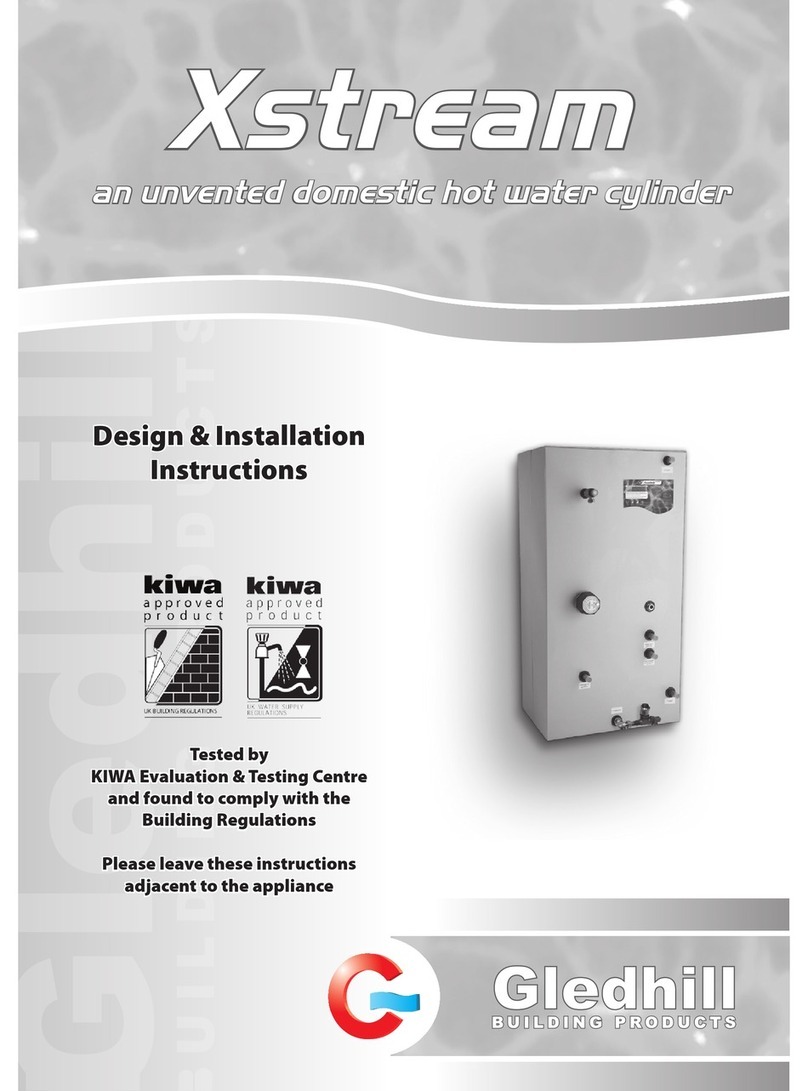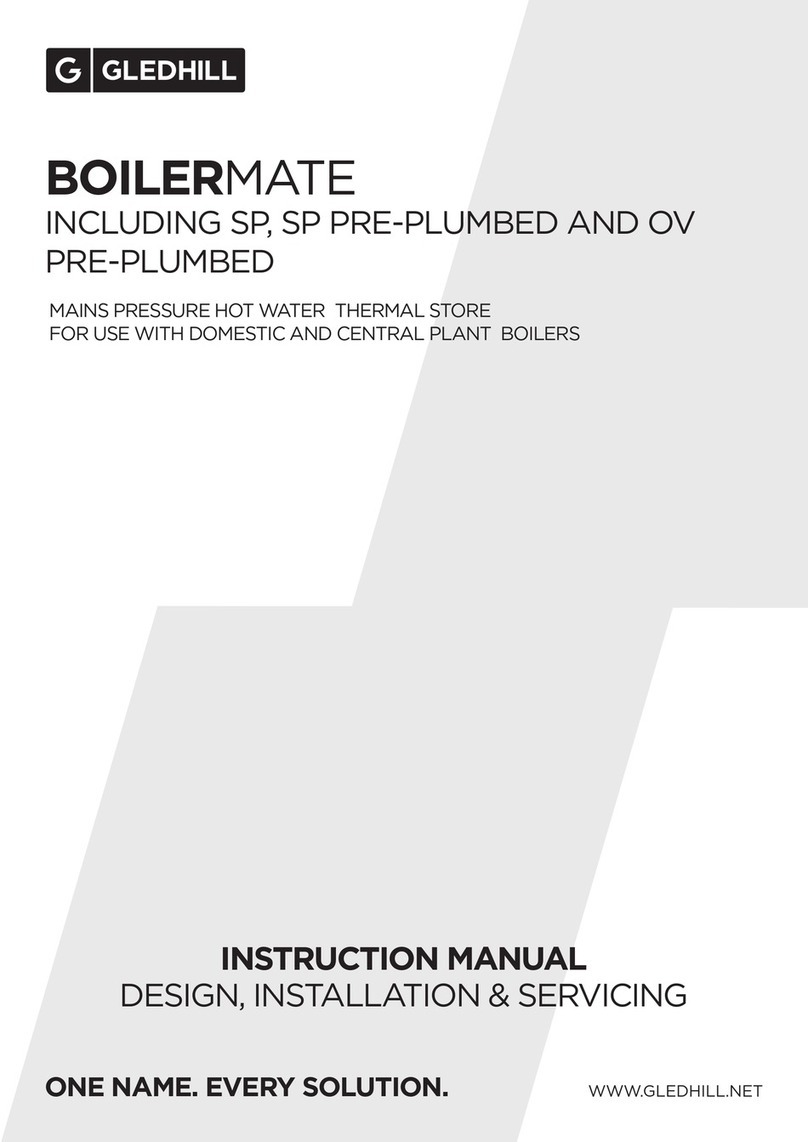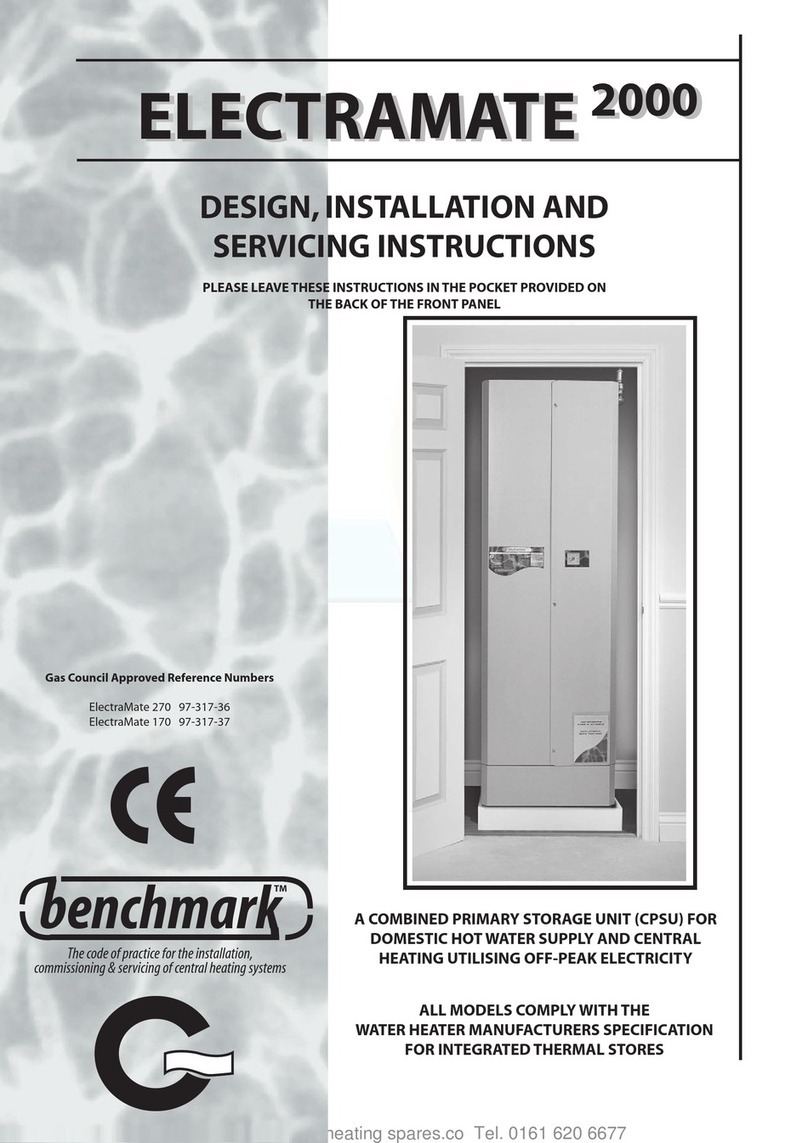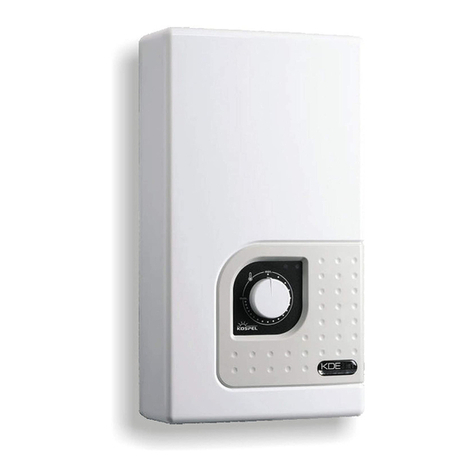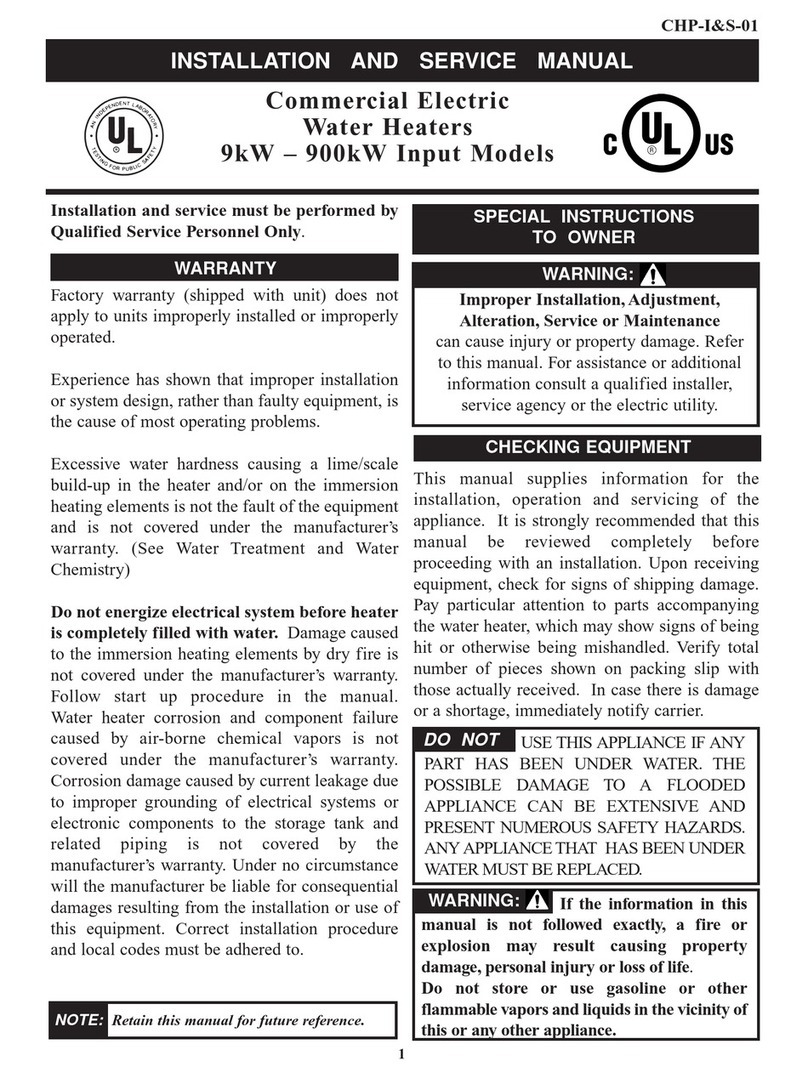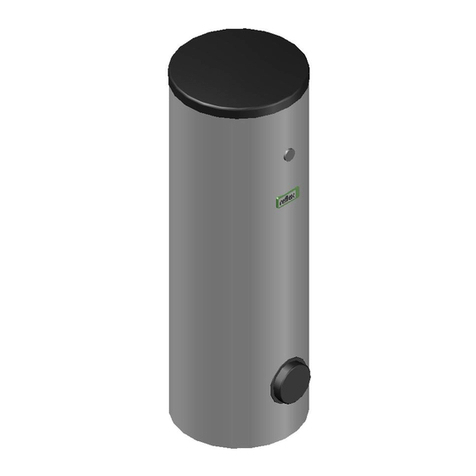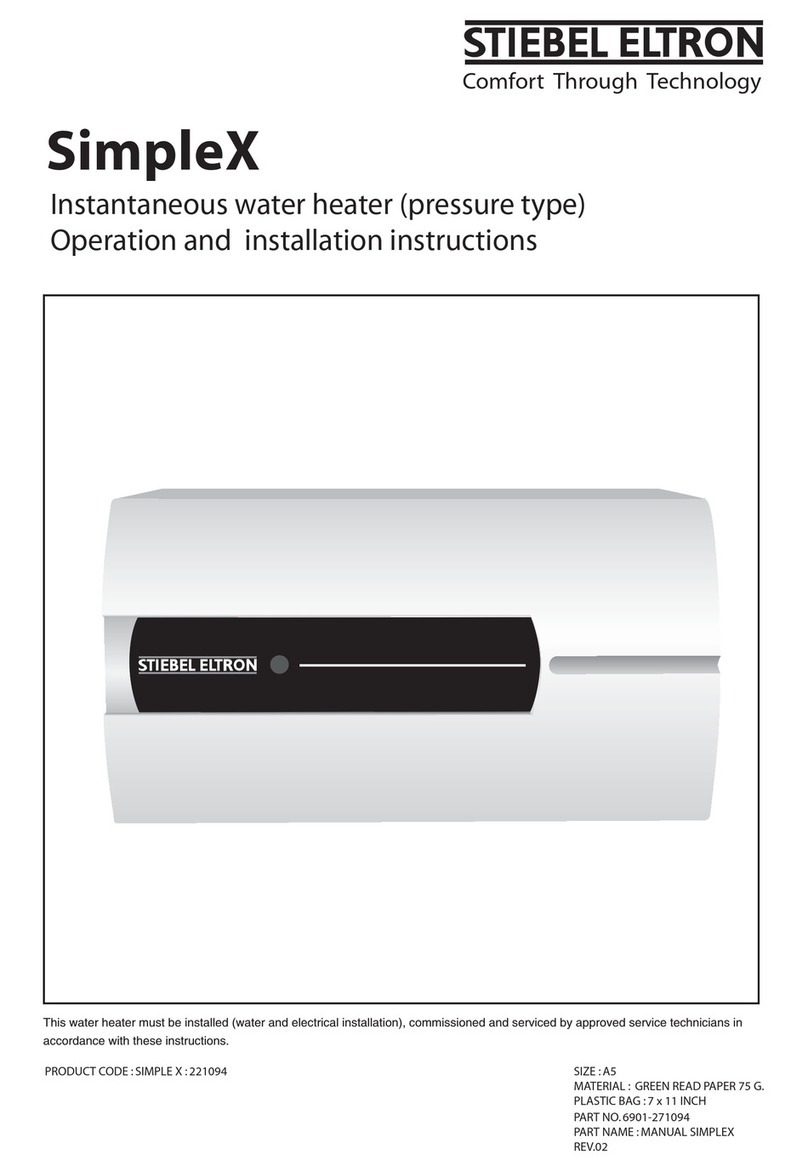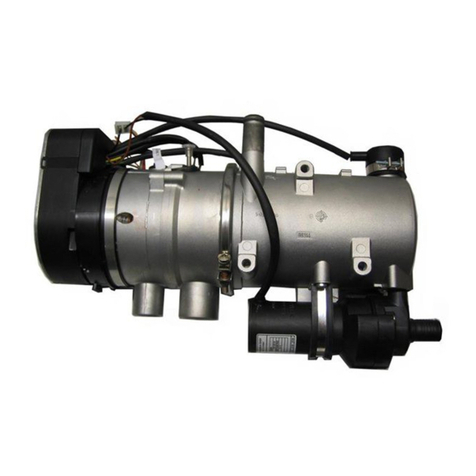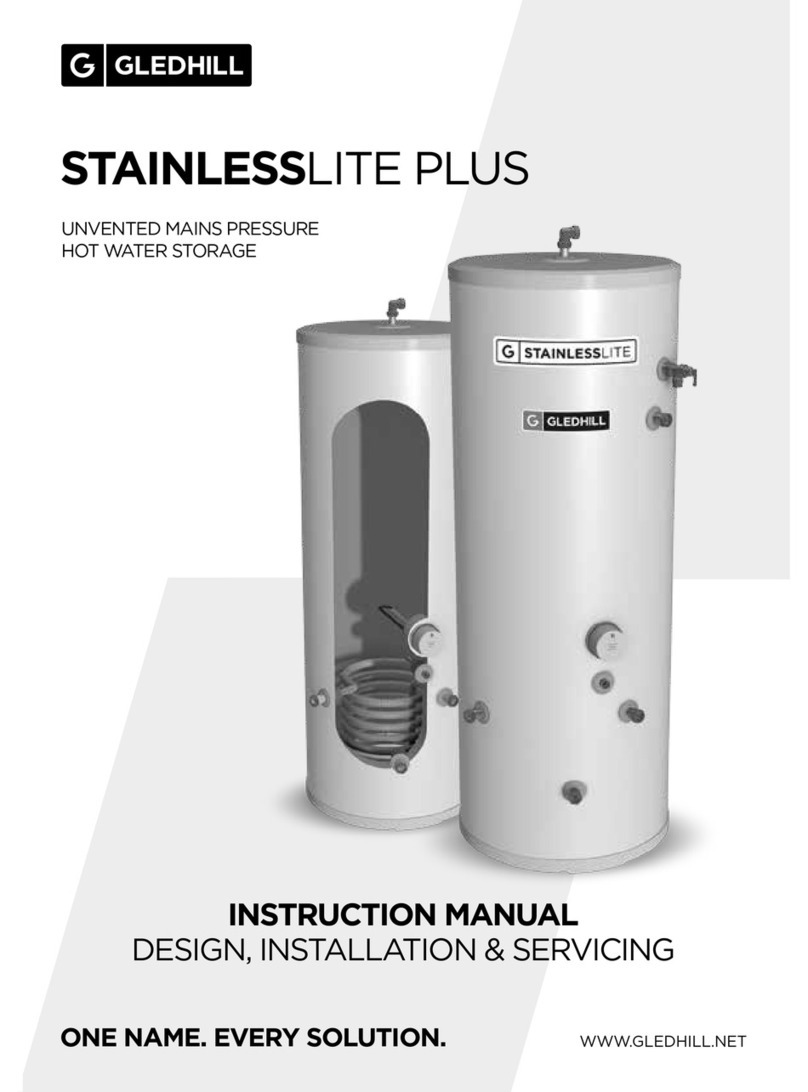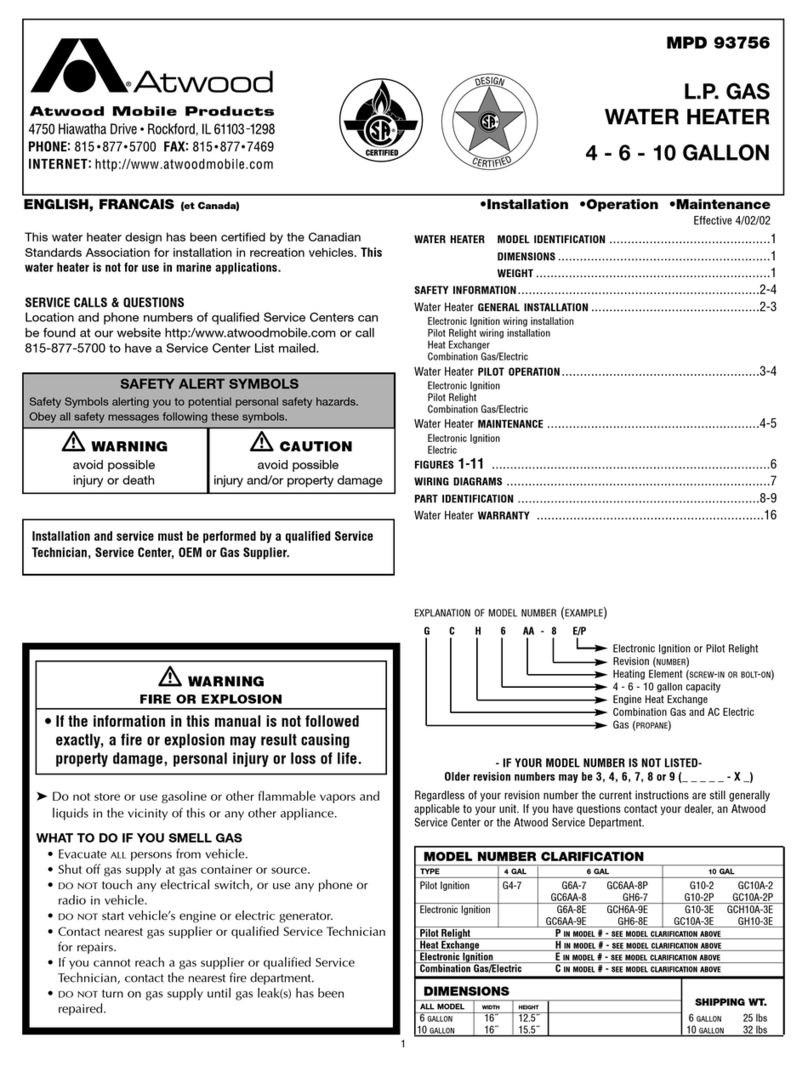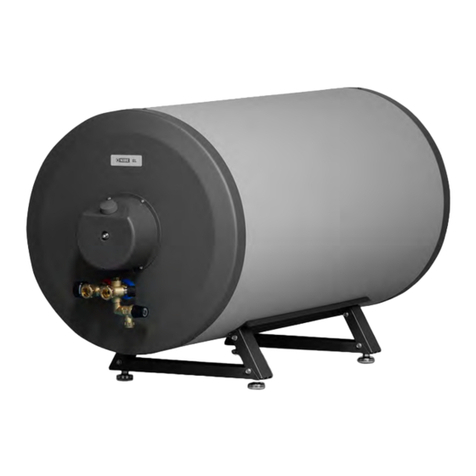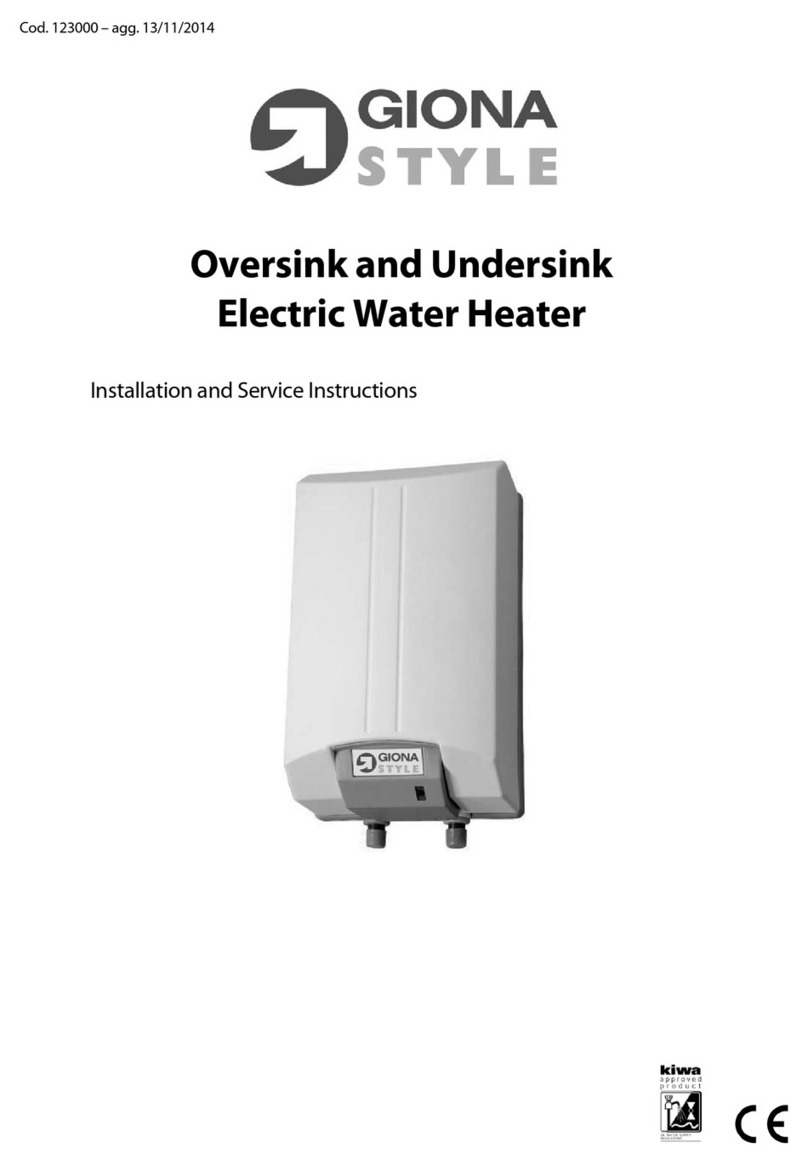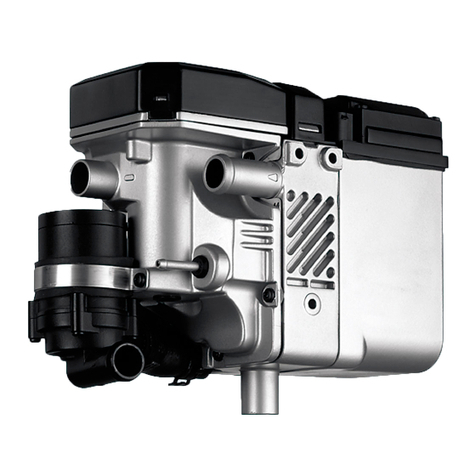Page 12
INSTALLATION
INSTALLATION
15 mm
discharge
pipe
Expansion
relief valve
Typical Discharge Pipe Arrangement
Dotted line showing
alternative route with
single tundish being used
500 mm max.
P & T
Relief
Valve
300 mm
min.
22 mm metal pipe with continuous
fall up to 9m equivalent length (D2).
NOTES:
The discharge will consist of scalding
waterand steam. Asphalt, roofing felt
and non-metallic rainwater goods may
be damaged by such discharges.
It is not acceptable to discharge straight
into a soil pipe.
Discharge below
fixed grating
Fixed Grating
Trapped gully
Pressure & Temperature/expansion Relief
Valve Pipework
Thereliefvalveshouldbeinstalledtodischarge
in accordance with G3 of the Approved
Document of the Building Regulations and
should be piped to where it is visible, but will
not cause danger to persons or damage to
materials.
The following information is taken from
Approved Document G3 of the Building
Regulations and is provided to assist with
the design and installation of the discharge
pipework. However, the information is not
exhaustive and reference should always be
madetoApprovedDocumentG3oftheBuilding
Regulations.The final decision regarding any
arrangements rests with Building Control and
it is recommended that their advice is sought
if you have any concerns regarding this aspect
of the installation.
The two safety valves will only discharge
water under fault conditions. When operating
normally water will not be discharged.
The tundish should be vertical, located in the
samespace asthe unventedhot water storage
system and be fitted as close as possible and
within 500mm of the safety device e.g. the
temperature relief valve.
Thedischargepipe(D2)fromthetundishshould
terminate in a safe place where there is no risk
to persons in the vicinity of the discharge,be
of metal and:
a) Be at least one pipe size larger than the
nominaloutletsizeofthesafetydeviceunless
its total equivalent hydraulic resistance
exceeds that of a straight pipe 9m long
i.e. discharge pipes between 9m and 18m
equivalent resistance length should be at
leasttwosizeslargerthanthenominaloutlet
size of the safety device, between 18 and
27mat least 3sizes larger,and so on. Bends
must be taken into account in calculating
the flow resistance. Refer to the table and
the worked example.
An alternative approach for sizing
discharge pipes would be to follow BS6700
Specification for design installation,testing
andmaintenanceofservicessupplyingwater
for domestic use within buildings and their
curtilages.
b) Have a vertical section of pipe at least
300mm long,below the tundish before any
elbows or bends in the pipe work.
c) Be installed with a continuous fall.
Worked Example
TheexamplebelowisforG1/2temperaturereliefvalvewithadischargepipe(D2)
having 4 elbows and length of 7m from the tundish to the point of discharge.
FromTable 1:
Maximum resistance allowed for a straight length of 22mm copper discharge
pipe (D2) from a G1/2 temperature relief valve is:9m subtract the resistance for
4 x 22mm elbows at 0.8m each = 3.2m.
Therefore the maximum permitted length equates to:5.8m.
5.8mis lessthan the actual length of 7mthereforecalculate the next largestsize.
Maximumresistanceallowedforastraightlengthof28mmpipe(D2)fromaG1/2
temperature relief valve equates to:14m.
As the actual length is 7m,a 28mm (D2) copper pipe will be satisfactory.
Table 1: Sizing of copper discharge pipe‘D2’for a temperature relief
valve with a G1/2 outlet size (as supplied)
Size of discharge
pipework
Maximum length of
straight pipe
(no bends or elbows)
Deduct the figure
below from the
maximum length for
each bend or elbow in
the discharge pipe
22mm Up to 9m 0.8m
28mm Up to 18m 1m
35mm Up to 27m 1.4m





















